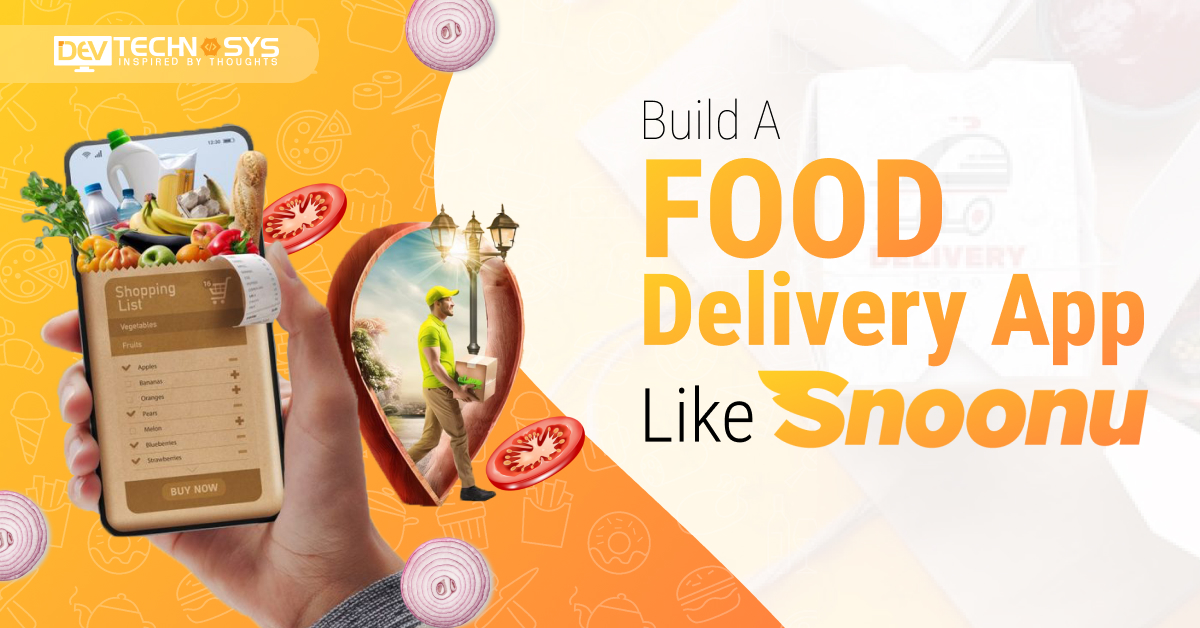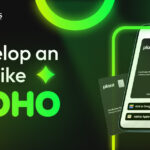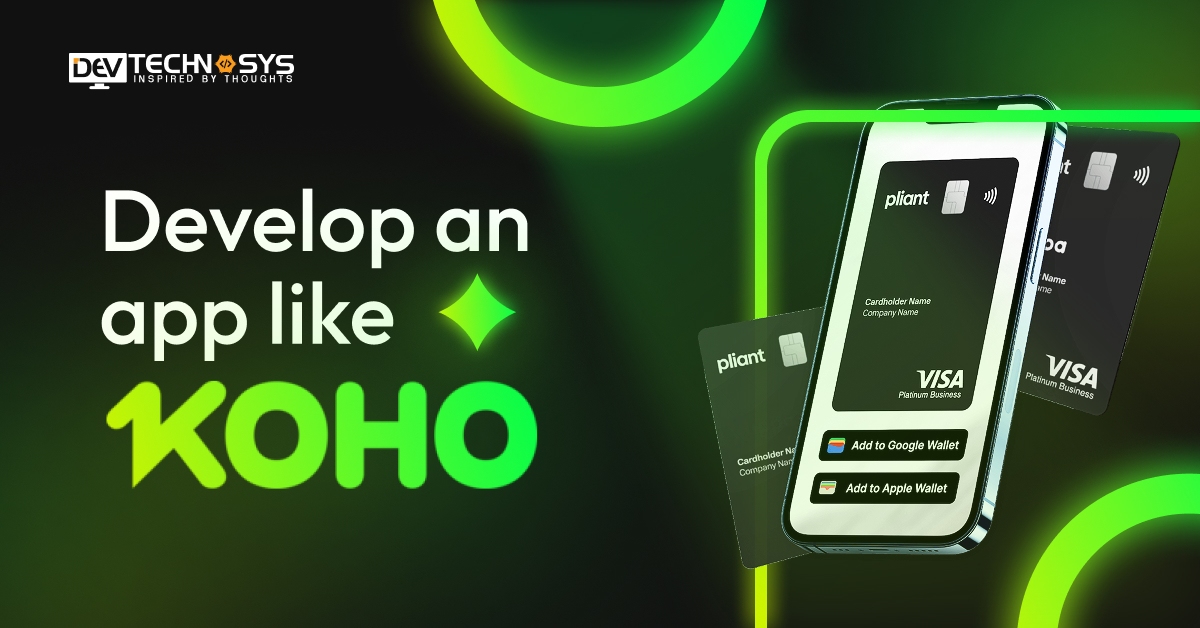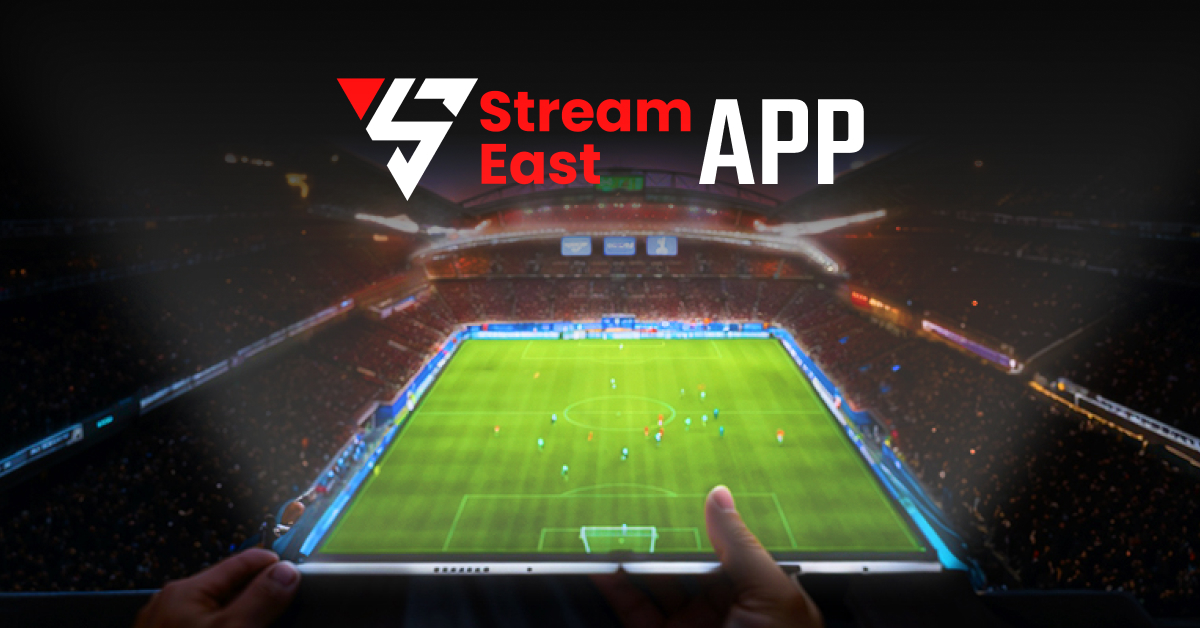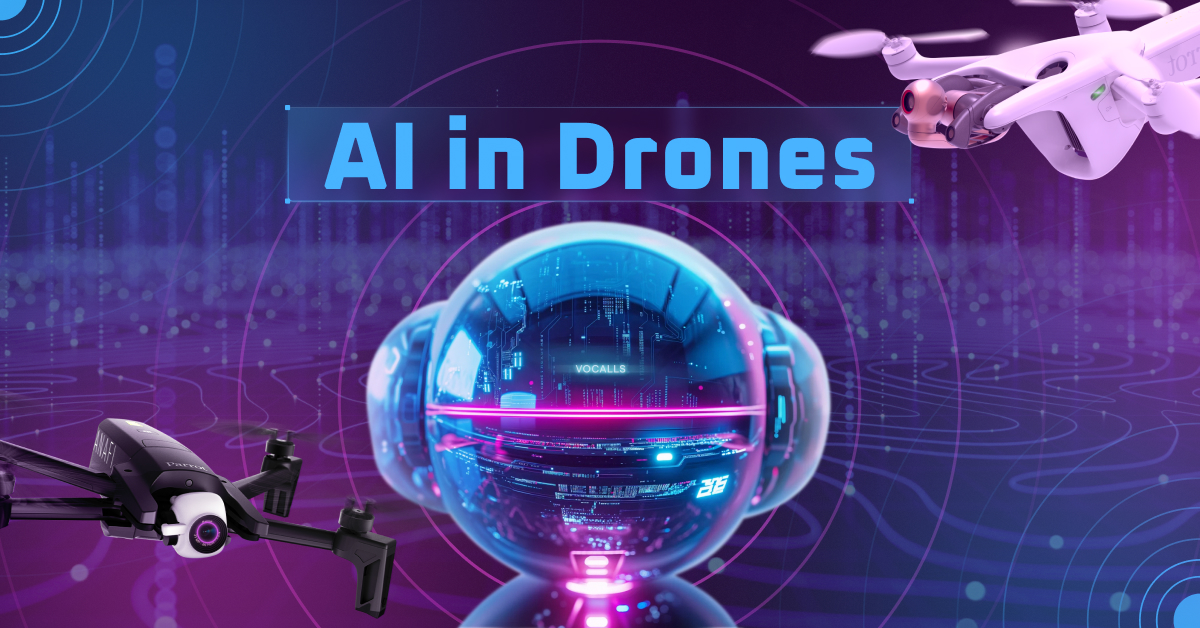The online food delivery market worldwide is booming and is projected to grow from USD 232.76 billion in 2024 to approximately USD 637.46 billion by 2034, at a CAGR of 10.6%. India is a rapidly growing market for food delivery apps, with companies like Zomato and Swiggy leading the way. Zomato expects annual meal delivery revenue growth of 30% in the next five years.
The sudden surge in the popularity of Indian food delivery apps presents an exciting opportunity for entrepreneurs looking to enter the food delivery market. Building an app similar to Snoonu, offering fast delivery across four different categories, can capitalize on this growing segment. In this blog, we’ll discuss the significant steps and possibilities to build a food delivery app like Snoonu. So let’s get this blog started.
What is Snoonu?
Snoonu is a leading food ordering app, also known as a super-app, in Qatar, founded by Hamad Al-Hajri in 2019. It offers much more than food and beverage delivery, with a comprehensive list of on-demand services, including delivery from pharmacies, retail shopping for electronics and gifts, and a shipment or package delivery service called “Snoosend.” Its key objective is to provide 24/7, fast, and efficient delivery throughout Qatar.
Snoonu holds a dominant position in the Qatari market as one of the preferred last-mile delivery solutions, boasting some of the best growth metrics on the market. This is evident in the high level of engagement and the broad user base that results from offering diverse services.
10 Top Alternatives of Food Delivery App Like Snoonu
Let’s dive straight into the list of these amazing food delivery applications that are known to be one of the most trending clones of Snoonu in 2025
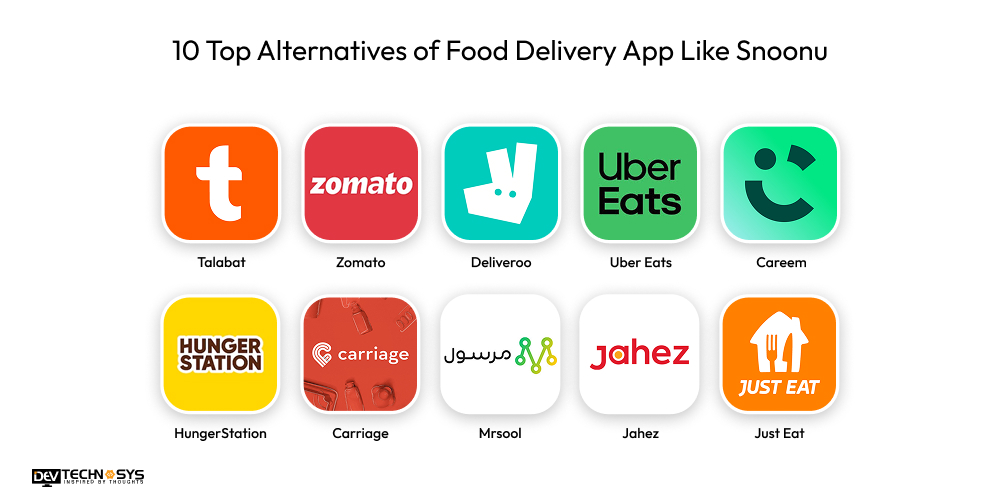
| App Name | Launch Year | Approx. Downloads | Headquarters / Region |
| Talabat | 2004 | 10M+ | Kuwait / MENA |
| Zomato | 2008 | 100M+ | India / Global |
| Deliveroo | 2013 | 10M+ | UK / Europe, Middle East, Asia |
| Uber Eats | 2014 | 500M+ | USA / Global |
| Careem (Now Delivery) | 2012 | 10M+ | UAE / MENA |
| HungerStation | 2012 | 10M+ | Saudi Arabia |
| Carriage | 2016 | 1M+ | Kuwait / GCC |
| Mrsool | 2015 | 10M+ | Saudi Arabia |
| Jahez | 2016 | 5M+ | Saudi Arabia |
| Just Eat | 2001 | 10M+ | Denmark |
Global Market Overview of Snoonu
- The global online food delivery market size was valued at USD 232.76 billion in 2024, with projections to reach USD 637.46 billion by 2034, with a CAGR of 10.6% over the period.
- This region accounted for more than 42% of the total global revenue share in 2023 and is projected to have a compound annual growth rate (CAGR) of 10.8% from 2024 to 2034.
- The European market is projected to reach USD 157.40 billion in 2025, with a CAGR of 7.18% from 2025 to 2029.
- The Indian online food delivery market is projected to grow from USD 72.12 billion in 2024 to USD 352.72 billion in 2034, with a CAGR of 17.2%.
Why Do Entrepreneurs Want to Build a Food Delivery App Like Snoonu?
Before we start on the journey to build a food delivery app like Snoonu, please go through these incredible reasons that will make you believe you’re doing the right thing.
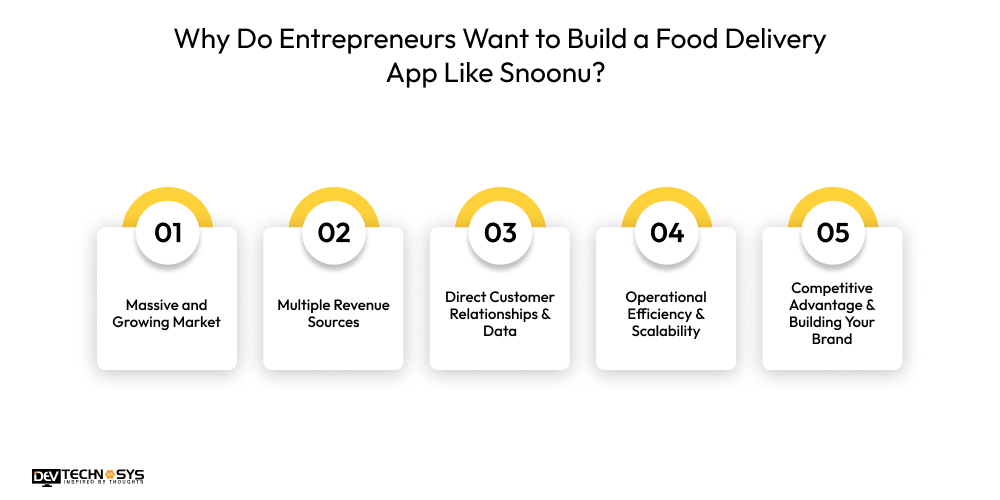
1. Massive and Growing Market
The online food delivery market continues to grow at an exponential rate. Consumers are focused on convenience like never before, and it is rare for people not to have a smartphone, thereby providing the ability to order food with just a few clicks. Apps similar to Snoonu offer a vast and increasingly larger customer pool that is willing to use delivery services.
2. Multiple Revenue Sources
A top food delivery app can be designed to have many different revenue streams. In addition to restaurant commission fees, an entrepreneur can earn money through delivery fees, subscriptions, in-app advertising, and surge pricing during busy periods. All of these avenues can create a solid and diversified revenue model.
3. Direct Customer Relationships & Data
Owning an app instead of relying on third-party aggregators allows an entrepreneur to have direct access to customer data. This data can be leveraged for direct marketing campaigns, strategic promotions, and loyalty programs that incentivize repeat business and build brand loyalty. Any growing business needs to understand customer preferences.
4. Operational Efficiency & Scalability
An app like SkipTheDishes eliminates some of the hurdles in the ordering and delivery process, such as order placement, payment processing, and dispatch status and tracking. By employing a skilled valuation model, enhanced operational efficiency is achieved, manual errors are reduced, and the business can scale with minimal effort during periods of increased demand and a broader range of services.
5. Competitive Advantage & Building Your Brand
In a competitive marketplace, a created application helps to brand your service and differentiate it from outside competitors. Entrepreneurs may have a viable option to gain market control, build a brand identity, inspire customer loyalty, and gain a competitive advantage over startup businesses that rely solely on third-party platforms by differentiating their business with a better user experience, reliable deliveries, and unique features.
5 Stages to Build a Food Delivery App Like Snoonu
Now, the time has come when you must know the step by step guide to build a food delivery app like Snoonu. Here we have compiled an expert guide on this. Let’s get this segment started.
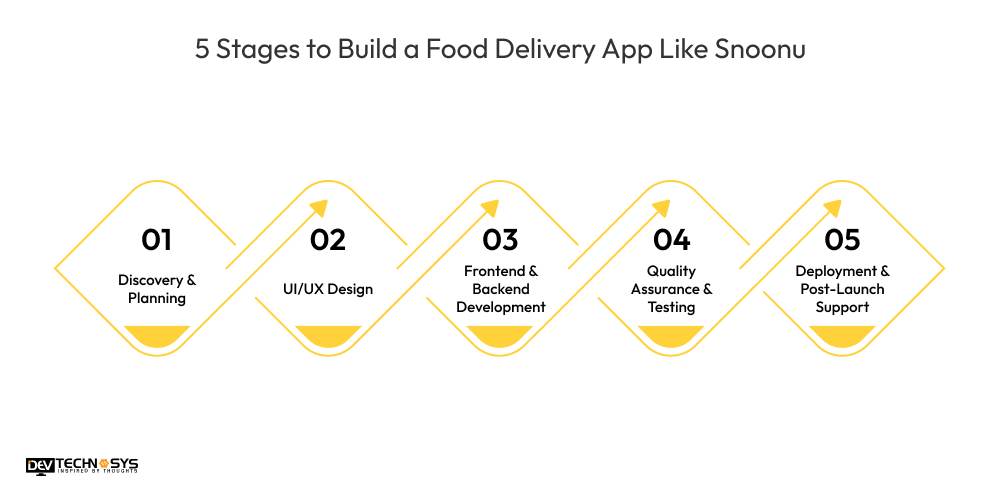
1. Discovery & Planning:
In the first stage to develop a food delivery app like Snoonu, we begin with in-depth market research to understand the target users, competitors (e.g. Snoonu’s various offerings), and unique selling point (USP).
Hire mobile app developers to clarify the app’s main components (customer app, restaurant app, delivery partner app), technology stack (e.g., Flutter/React Native for cross-platform, Node.js for the backend), and draft the app development roadmap, sometimes beginning with a Minimum Viable Product (MVP) to validate the idea and capture early-stage feedback.
2. UI/UX Design:
User interface and experience are everything for a food delivery app. This stage focuses on building out a user-friendly, engaging, and smooth interface.
We develop wireframes and prototypes that guide the user experience, ensuring straightforward navigability, order placement, payment flows, and real-time tracking for customers. For restaurants, we deliver order management dashboards, and for delivery partners, an optimized routing experience.
3. Frontend & Backend Development:
Moving to the third stage to create a food delivery app like Snoonu, front-end developers create the user-facing components, ensuring responsiveness and engagement across various devices.
Hire dedicated developers to build server-side elements such as databases (ex, MySQL/Redis), APIs for integrations (ex, payment gateways, routing services like Google Maps, push and SMS notifications via Twilio/Firebase), and security features. This is the development of the three panels – an app for customers, restaurants, and delivery drivers.
4. Quality Assurance & Testing:
Let’s connect to the fourth stage to make a food delivery app like Snoonu. Before launching your application, testing is crucial to ensure that it’s bug-free and operates at an optimal level.
Our Quality Assurance (QA) team completes testing cycles, including functional testing (ensuring each feature operates as intended), performance testing (ensuring the app can manage high user traffic), security testing (to protect customer data), and user acceptance testing (UAT – testing with real users to collect feedback and refine your app before launch).
5. Deployment & Post-Launch Support:
In the final mobile app development process, once testing is complete, the application is deployed to app stores (e.g., Google Play Store and Apple App Store), and marketing plans are executed to create visibility.
Post-launch, we provide ongoing support and maintenance, monitoring performance, addressing any issues, and continuously updating the app with new features and improvements based on user feedback and market trends, much like how Snoonu continually expands its services.
Essential Features of a Food Delivery App Like Snoonu
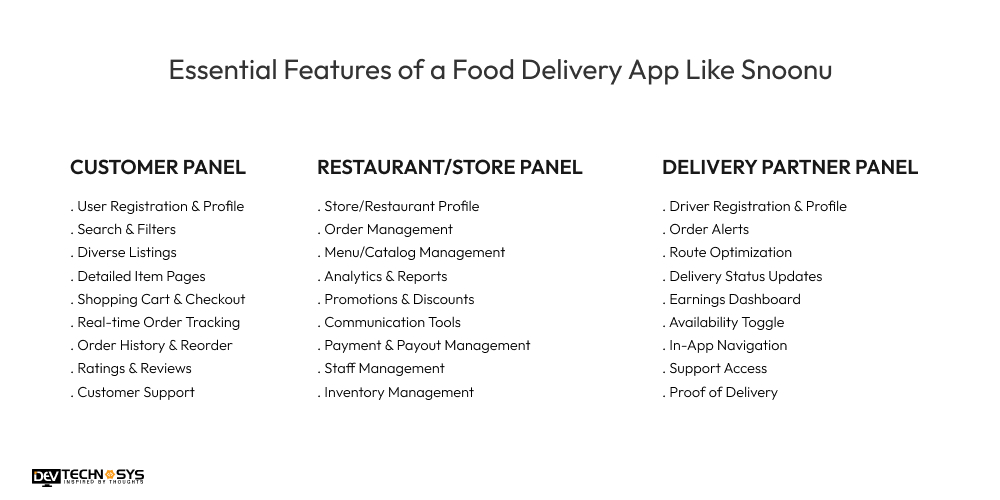
| Customer Panel | Restaurant/Store Panel | Delivery Partner Panel |
| User Registration & Profile | Store/Restaurant Profile | Driver Registration & Profile |
| Search & Filters | Order Management | Order Alerts |
| Diverse Listings | Menu/Catalog Management | Route Optimization |
| Detailed Item Pages | Analytics & Reports | Delivery Status Updates |
| Shopping Cart & Checkout | Promotions & Discounts | Earnings Dashboard |
| Real-time Order Tracking | Communication Tools | Availability Toggle |
| Order History & Reorder | Payment & Payout Management | In-App Navigation |
| Ratings & Reviews | Staff Management | Support Access |
| Customer Support | Inventory Management | Proof of Delivery |
Advanced Features of Food Delivery App Like Snoonu
Having a list of essential features for a food delivery app isn’t enough if you’re about to build Snoonu alternatives. Here are 10 advanced features for the cheapest food delivery app like Snoonu:
- AI-Powered Predictive Ordering: An app like DoorDash offers dishes and groceries based on user habits, weather, and time of day for enhanced personalization, ultimately reducing browse time.
- Voice Activation Ordering: A similar app like Snoonu offers hands-free ordering with voice, increasing convenience and accessibility.
- Subscription (Prime/Gold): Recurring payment for unlimited free deliveries, exclusive discounts, and early access to new vendors, with the potential to offset lost spending with prior loyalty.
- Multi-Vendor Cart: Snoonu alternatives allow users to order different items from different restaurants and/or stores as one transaction, and receive consolidated deliveries.
- Dynamic Pricing & Surge Zones: A similar app like Snoonu automatically changes delivery pricing based on real-time demand, traffic, weather, and driver availability, generating increased profitability and service.
- AR-Enabled Menu Visualization: A cross-city food ordering app allows users to visualize what their dish will look like in their space before proceeding to full-ordering.
- Gamification & Loyalty Program: Snoonu alternatives offer points, badges, leaderboards for repeat orders, referrals & challenges, engaging the user and leading to retention.
- Kitchen/Store Automation: Connecting the app directly to restaurant POS/kitchen display systems for smooth flow of orders, while cutting back on unnecessary human interaction for more accuracy.
- Advanced AI for Route/Batch Optimization: Other apps like Snoonu utilize academically robust algorithms to create the most efficient and optimized delivery routes. Owners typically batched two or more orders together per driver whenever possible.
- Drones/Robots As Future Delivery Integration: An app like Seamless offers embedding capabilities needed to take advantage of autonomous delivery channels in regions where they are permitted, decreasing the human labor cost associated with deliveries.
The Role of AI in Food Delivery Apps Like Snoonu
The far-reaching effects of AI on food delivery apps like Blue Apron or Snoonu are focusing on improved efficiency and personalization of food ordering and deliveries. AI can plan and optimize the delivery routes in real-time, considering weather, traffic and other delays, leading to a more efficient delivery that is faster and cheaper.
AI uses past ordering history and preferences to power recommendation engines that lead to more engaged customers and improved user experience. AI will enable restaurants to predict demand and reduce food waste, and will even provide AI-based chatbot services for real-time customer service.
Better efficiency through AI improves overall operational effectiveness, profitability and user experience, demonstrating smarter ways to deliver food.
Why Do Customers Love Snoonu So Much?
Snoonu clone app provides a comprehensive and convenient service for its customers. Here are four of the main reasons:
1. Super App Convenience:
Snoonu is not just about food, but it can help you find groceries, pharmacy items, electronics, gift items, and you can even use Snoonu to send packages (Snoosend) with one app. We love this “all-in-one” convenience as I don’t waste time juggling multiple services and platforms.
2. Speed and Efficiency:
Snoonu food delivery app highlights speed in delivery; many times, the delivery will also come in 30 minutes or less, and the fact that customers can track each order in real time represents peace of mind in addition to the immediacy factor.
3. Simple User Experience:
An app like Just Eat or Snoonu is simple and sophisticated in its layout and ease of navigation. For customers, ordering and managing deliveries requires minimal effort to sort through the pages of options to browse, order, and manage.
4. Localized Services & Variety:
Snoonu has identified the needs of its user base and is focused on catering to those needs and wants it by providing options from tons of local businesses and a variety of cuisines, in addition to offering small business initiatives to support local entrepreneurs.
How Much Does it Cost to Build a Food Delivery App Like Snoonu?
Snoonu is a multifaceted “super app” that encompasses several services, so the initial investment may be significant. A basic food delivery app could range from $8,000 to $16,000 (plus) per market. The cost to build a food delivery app like Snoonu ranges from 16000 to upwards of 30,000+, with potential for higher Snoonu app development costs depending on the finished product.
Here are six key factors influencing the food delivery app development cost:

1. Feature Set Complexity:
The offerings of Snoonu (food, grocery, pharmacy, retail, parcel delivery) would require numerous features for the building of each service – Separate menu features for the items, inventory management, specialized tracking, etc.
The greater the quantity of features and integrations you require in each service, the more time and money your food delivery app development process will cost you.
| Service Type | Estimated Cost |
| Basic Food Delivery | $8,000 – $12,000 |
| Multi-service (Food + Grocery + More) | $14,000 – $25,000+ |
| Super App Functionality | $25,000 – $35,000+ |
2. Platform Compatibility:
Building on both IOS and Android increases the cost to develop a food delivery app like Snoonu compared to one platform at a time. While cross-platform applications (Flutter, React Native) can offer some cost advantage, sometimes, native development for both platforms can outperform cross-platform applications and cost more.
| Platform | Estimated Cost |
| Single Platform (iOS or Android) | $6,000 – $10,000 |
| Cross-platform | $8,000 – $12,000 |
| Native for Both Platforms | $12,000 – $18,000 |
3. UI/UX Design and Customization:
A customizable, visually attractive, and very usable user interface is critical, as the “super app” marketplace is competitive. Designing unique layouts, complex animations, and incorporating a seamless user experience across all services requires more design hours and results in more restaurant mobile app development cost.
| Design Complexity | Estimated Cost |
| Basic & Template-based UI | $1,000 – $2,000 |
| Moderate Custom UI/UX | $2,500 – $5,000 |
| Advanced Custom UI | $5,000 – $8,000+ |
4. Technology stack & integrations:
Choosing multiple backend technologies (Node.js, Python, etc.), complex databases (PostgreSQL, MongoDB, etc), and cloud services (AWS, Google Cloud, etc) will determine the performance and scalability of the “super app”. Integrating multiple third-party APIs for payments, mapping services, push notifications, and analytics will also increase food delivery app development cost.
| Technology Scope | Estimated Cost |
| Basic Stack | $2,000 – $4,000 |
| Intermediate Stack | $5,000 – $7,000 |
| Advanced Stack with APIs | $7,000 – $12,000+ |
5. Development Team Location & Experience:
Mobile app development companies have a wide range of hourly rates. Sometimes development in third-world countries can be less expensive compared to Western nations, but the knowledge and experience of the development team will be extremely important to the success of a complex application such as Snoonu, and this is the reason local development teams with proven experience have higher cost to build a food delivery app like Snoonu.
| Region | Estimated Cost (MVP) |
| India, Philippines | $8,000 – $14,000 |
| Eastern Europe | $12,000 – $20,000 |
| USA, Canada, UK | $25,000 – $40,000+ |
6. Backend Infrastructure and Scalability:
Multi-service apps for food delivery will require a robust and scalable backend infrastructure that can handle a high number of users, a high volume of concurrent orders, and multiple gigabytes of data.
From the beginning, it is essential to invest in a scalable architecture and quality database approach because it will incur more food delivery app development costs, but also save you from expensive redesigns or overhauls later.
| Infrastructure Level | Estimated Cost |
| Basic Backend | $3,000 – $5,000 |
| Scalable with Cloud | $6,000 – $10,000 |
| Enterprise-grade Infrastructure | $12,000 – $18,000+ |
5 Ways to Make a Profit with the Best Food Delivery App Like Snoonu
Now that you know the cost to develop a food delivery app like Snoonu, many must be wondering how to recoup their investment after this. Yes, yes we heard your business nature is to look for profit & ROI.
The Snoonu clone app, with its diverse range of services, offers multiple monetization options, making it an attractive investment opportunity. Here are 5 common ways:
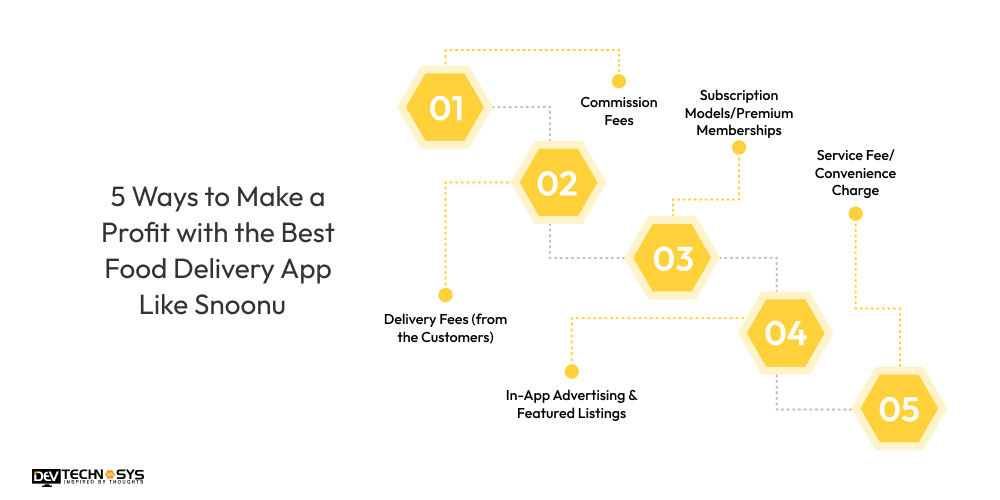
1. Commission Fees:
This is the main revenue stream; the app like Glovo charges an agreed percent (usually 15-30%) of the overall price from every customer who places an order with its partner restaurants, grocery stores, pharmacies, and other places that sell retail products.
This model achieves an alignment of interests, where the app only profits when the partners profit from sales via the platform.
2. Delivery Fees (from the Customers):
The customers are charged a ‘Delivery Fee’ every time they order food or a related product from the app. This fee could be a flat fee, a fee based on distance to the customer’s delivery address, or dynamically priced according to supply and demand in a marketplace (charging surge prices during busy hours or bad weather). This fee covers the costs associated with the delivery fleet and adds profits to the business.
3. Subscription Models/Premium Memberships:
The app like Swiggy can set up a subscription for customers (for example; a “Snoopy Pass”) that customers pay a monthly or annual fee to receive user benefits – such as unlimited free deliveries, special customer only deals, adjustments to the order service, or early access to new restaurants/stores– in exchange for a recurring payment. This model fosters loyalty among the customer base and also enables predictability.
4. In-App Advertising & Featured Listings:
Restaurants, grocery stores, and other businesses can pay to have their listings promoted or displayed higher in search results or run banner ads in the app. This increases their visibility to a wide user base, and the app collects advertising revenue.
5. Service Fee/Convenience Charge:
In addition to delivery fees, the app like Deliveroo can charge a small service charge or convenience charge on customer orders. This charge covers the app’s operational expenses for maintaining the platform, payment processing, customer support etc., basically as a small transaction fee. For its “Snoosend” (package delivery) service, Snoonu likely charges a direct fee based on package size, distance and level of urgency.
Technology Stack for a Food Delivery App Like Snoonu
| Component | Technologies Used |
| Frontend (Mobile App) | Flutter / React Native / Swift (iOS) / Kotlin (Android) |
| Backend | Node.js / Python (Django or Flask) / Ruby on Rails |
| Database | PostgreSQL / MongoDB / MySQL |
| Cloud Hosting | AWS / Google Cloud Platform / Microsoft Azure |
| APIs & Integrations | Stripe / Razorpay (Payments), Google Maps / Mapbox (Location), Firebase (Push, Auth) |
| Real-time Features | Socket.IO / Firebase Realtime Database / Pusher |
| Admin Panel | React.js / Angular / Vue.js |
| Authentication | OAuth 2.0 / JWT / Firebase Auth |
| Notifications | Firebase Cloud Messaging (FCM) / OneSignal |
| Analytics | Google Analytics / Mixpanel / Firebase Analytics |
| CI/CD & DevOps | GitHub Actions / Jenkins / Docker / Kubernetes |
| Content Management | Strapi / Contentful / Custom-built CMS |
In A Nutshell!
Hopefully, you liked this blog and now you know how to build a food delivery app like Snoonu. Dev Technosys is a food delivery app development company that builds advanced food delivery applications based on your requirements.
We maximize user experience by integrating real-time order tracking, multiple payment gateways, and multi-device support. We skillfully integrate features which efficiently process high traffic at affordable Snoonu app development cost. So are you ready to take the next step in creating your food delivery app by partnering with us.
Frequently Asked Questions
Q1.What Type Of Business Model Should I Choose For My App?
Be sure to select a business model that complements your target market’s preferences: commission-based, subscription models, delivery fees, etc. For example, Snoonu offers multi-service, providing various services for a broad demographic.
Q2. What Marketing Strategies Can I Implement To Launch My App?
Consider sample strategies you can apply: set up a campaign before the launch, partner with local businesses to promote your app through discounts or coupons, and utilize social media and influencer marketing to create buzz and get users excited for launch day.
Q3. How Can I Ensure the Scalability And Performance Of My App?
Considerations for building a scalable architecture and cloud infrastructure, effective storage and retrieval of data, improving app performance by using caching techniques, and conducting performance testing to assess the ability to handle the growing user requirements.
Q4. What Are The Considerations For Payment Gateway Integrations?
Choosing secure and reliable payment gateways such as Stripe or PayPal, ensure the payment gateway supports multiple payment methods (credit/debit cards, digital wallets, etc.), and ensure the payment gateway is compliant with security standards (PCI-DSS).
Q5. What Is The Best Way To Handle Customer Support And Feedback?
Implement in-app customer support channels (chatbots or live chat), provide a method for users to give feedback and rate their experience, and use the feedback to improve the quality of service.
Q6. How Much Does It Cost To Build A Food Delivery App Like Snoonu?
The cost to develop a food delivery app like Snoonu typically ranges between $8,000 and $25,000, depending on the features, platforms, design complexity, and the location of the developer. Advanced features like real-time tracking increase Snoonu app development cost.
